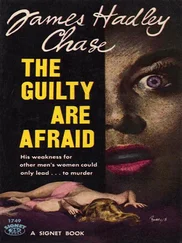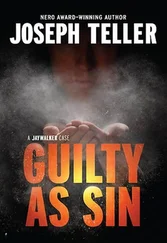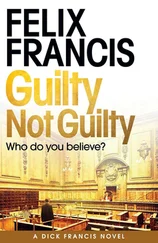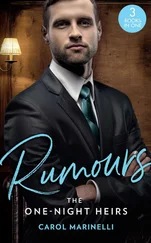‘Sebastian admits fighting with Ben earlier that day and he told us how Ben jumped from the climbing frame, causing his nose to bleed. Spots of Ben’s blood and fibres from his clothes were transferred on to Sebastian’s clothing, but no more than you might expect in the course of a few hours’ play outside where there was a childish disagreement and an accident. The prosecution’s own scientists told you that they would have expected much more blood to be on Sebastian’s clothes if he had in fact killed Ben in this very violent way. Those of you with children will know that the small amounts of fibres and blood found on Sebastian’s clothing are entirely consistent with normal rough-and-tumble play.
‘Ben’s murder was brutal, but it also required considerable strength and I know that you will question the ludicrousness of the prosecution’s suggestion that the small boy before you today would have been able to wield such force. We know that the witness, Mr Rankine, is short-sighted. He didn’t see Sebastian with Ben that afternoon, but did he see someone else trying to hurt that little boy? He has told you that it was possible he saw a small adult attacking Ben.’
Irene turned a page in her notebook. She took a deep breath and swallowed, nodding gently at the jury. Daniel watched them. They were rapt, watching Irene, believing her.
‘You have heard that Sebastian suffers from a very mild disorder known as PDD-NOS – a disorder on the Asperger’s spectrum – and this may make Sebastian seem more … intense than other eleven-year-olds you may know, but … however unusual you may find him, you must not let that distract you from the evidence of the case. Sebastian … was brave enough to tell you his story. He didn’t need to, but he wanted to speak so that you could hear the truth about what happened that day, in his own words. Sebastian may be intense, but he is not a murderer. He may be a bully at school, but he is not a murderer.
‘The facts: if Sebastian had killed Ben, he would have gone home that day covered in blood. He would not have arrived home at three o’clock and watched television with his mum. Sebastian is a small boy and could never have wielded the murder weapon with the force required to kill Ben. But more significantly, there is no evidence tying the brick to Sebastian, and no one saw Sebastian hurt Ben. He was seen chasing and fighting Ben in the park, but this fight was so unconcerning to the man who witnessed it that he did not even feel the need to physically separate the boys, or to report the incident to the police. The prosecution’s witness went home and watched television because what he had seen was not an act of violence preceding murder but a very normal argument between two little boys, and the boys, when called on by an adult to stop, did exactly that.
‘More importantly, what role have the police played in ensuring justice was done in this case? Mr Rankine admitted that he may have seen an adult in a pale blue or white top attacking Ben. What did the police do about this? They checked the council’s CCTV tapes and found nothing, so what else did they do …?’
Irene raised both hands up to the jury, as if asking them to contribute.
‘Not a thing.’ She shrugged her shoulders and leaned on the lectern, as if resigned to such faineance.
‘By all accounts there could be an adult assailant – someone who had a white or pale blue top, who attacked and killed Benjamin after Sebastian left the playground. This important possibility, highlighted to us by the Crown’s witness, was not properly followed up, as it should have been. Are we sure that this boy committed this crime, or is there indeed the chance that someone else did?
‘And so you must ask yourselves, is it safe to convict this boy on this evidence? Once you set aside the newspapers, the terrible images you have seen, and the things you have heard; once you consider that there is absolutely no evidence that directly proves Sebastian killed Ben: no forensic evidence consistent with an injury of this type, no fingerprints on the murder weapon, no witnesses to the actual attack – you have to come to the only rational conclusion that is left.
‘The prosecution has to prove beyond all reasonable doubt that the defendant is guilty. The burden of proof lies with the prosecution, not with the defence. You must now consider whether that has been achieved, or if you indeed doubt the circumstantial evidence that has been presented to you. This is no hardened criminal who stands before you, with a string of convictions in his past. This … is a little boy.
‘When you come back from your jury room, I want you to be very sure … very sure that you have made the right decision. I know that you will see the facts as they are and realise that Sebastian … is not guilty.
‘If you believe that Sebastian is innocent, you must acquit. If you believe that Sebastian is probably innocent you must acquit. Even if you think that Sebastian might be innocent, you must acquit.’
Irene gathered up her notes. ‘Thank you for listening.’
The judge’s summing up lasted all afternoon as expected and then the jury were excused to consider the verdict.
Daniel worked late at the office and then went to the Crown for last orders. He texted Irene when he was halfway through his pint: ‘Thinking about tomorrow. Not sure I am ready for it. Hope u r ok.’ There was no reply.
The next day was Friday, and Daniel worked through the morning before he got the call to say that the jury had reached a verdict.
In the courtroom, everyone assembled again: lawyers, family, journalists and public. Sebastian sat beside Daniel, waiting for the decision that would define the rest of his life.
Daniel looked around when court was in session. Minutes passed dizzily, a flutter of processes. He glanced down at the small boy beside him, noticing again the valiant tilt of his chin, the young green eyes expectant, wary.
He put a hand on Sebastian’s back. The little boy seemed so smart today in a fresh shirt that was too big on the collar and a striped tie. He looked up at Daniel and smiled.
Baron raised himself in his chair, and peered over his glasses at Sebastian and Daniel. ‘The child need not stand.’
The clerk stood up and addressed the jury. ‘Will the foreman please stand?’
The foreman was a woman. She rose to her feet and folded her hands in front of her.
‘Have you reached a verdict on which you are all agreed?’
‘Yes,’ said the woman, who was middle-aged, clearly spoken.
‘Do you find the defendant, Sebastian Croll, guilty or not guilty of the murder of Benjamin Stokes?’
Daniel couldn’t breathe. The air was thick. Each pair of eyes in the crowded court was focused on the woman’s lips, waiting for her to speak. Daniel could feel the tension emanating from the young boy beside him.
When Tyrel had been in the dock, Daniel had felt separate from him and powerless. Yet now it felt worse having Sebastian at his side, feeling the brush of the boy’s arm, watching the almost imperceptible rock of his body, smelling his clean hair. With his little client right beside him, he was no more able to protect Sebastian than he had been with Tyrel.
If Sebastian was convicted of murder, the judge would have no discretion and would have to sentence him to detention at Her Majesty’s pleasure. Even after sentencing, the length of Sebastian’s incarceration would be decided not by legal professionals but by the Home Secretary. The boy’s life would then be subject to political expediency, with the likelihood of the Home Secretary lengthening his sentence to assuage public and media outrage.
Daniel thought about the years the child would spend in secure units and then adult prisons; the drugs he would be introduced to, the relationships he would form and learn to lose; the estrangement he would feel from society and from the future itself. The future would always imply some kind of imprisonment. The foreman of the jury raised her eyes to look at the clerk who addressed her.
Читать дальше












